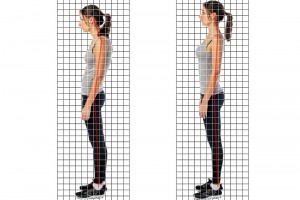Backpack Safety: Protecting Your Family’s Health Across Generations
 As a parent juggling multiple responsibilities—whether it’s caring for your children, supporting an aging parent, or balancing your professional life—it’s easy to overlook everyday health risks that might seem trivial but can have long-lasting consequences. One such risk is the strain that carrying heavy backpacks can place on your child’s developing body. While we often associate back pain with adults, more and more children are reporting discomfort and even long-term issues, and backpacks are a leading culprit.
As a parent juggling multiple responsibilities—whether it’s caring for your children, supporting an aging parent, or balancing your professional life—it’s easy to overlook everyday health risks that might seem trivial but can have long-lasting consequences. One such risk is the strain that carrying heavy backpacks can place on your child’s developing body. While we often associate back pain with adults, more and more children are reporting discomfort and even long-term issues, and backpacks are a leading culprit.
However, this concern is not just for your kids. The principles of proper load management apply across all ages, from school children to active adults and even your elderly parents who may still be carrying shopping bags, or luggage, or even supporting their balance with improper posture. How can you, as a parent and caregiver, ensure the well-being of your entire family, including yourself, through the awareness of proper load-bearing habits?
Why Backpack (and Load-Bearing) Weight Matters for Everyone
According to the American Chiropractic Association (ACA), backpacks, when overloaded or worn incorrectly, are a significant cause of back, neck, and shoulder pain in children. A 2001 report by the U.S. Consumer Product Safety Commission found that over 7,000 children visited emergency rooms due to backpack-related injuries. More recent studies highlight that the problem persists, with some research showing children carrying backpacks equivalent to a 29-pound load for a 132-pound adult woman, a burden no one should have to carry for extended periods. This is an issue you can relate to: imagine regularly lifting and carrying a bag that strains your back.
For aging parents, carrying improperly distributed weight, whether it’s a purse, shopping bag, or briefcase, can exacerbate balance issues, joint pain, and even spinal health problems, making them more vulnerable to falls or long-term musculoskeletal conditions. Similarly, for adults, including yourself, overloaded laptop bags or gym bags contribute to chronic back problems, muscle strain, and posture issues.
The Ripple Effect: How Backpack Safety Can Protect Your Whole Family
The health of your loved ones—children, spouse, aging parents, and yourself—can benefit from the same principles of good load management. The long-term effects of improper weight distribution not only affect posture but also have consequences for the spine, muscles, and joints, which can persist into adulthood or worsen existing conditions.
Let’s explore how these principles can apply across the board, making life healthier for everyone in your family.
For Your Children:
Children are especially vulnerable to backpack injuries because their bodies are still growing and developing. Research shows that children with overloaded backpacks often lean forward, which can contribute to spinal misalignment and lead to long-term issues like scoliosis or kyphosis.
Action Steps for Parents:
- Limit Backpack Weight: Your child’s backpack should weigh no more than 10-15% of their body weight. Heavier bags force them to lean forward, which places undue pressure on their spine.
- Choose Backpacks with Compartments: Ensure that heavier items are placed closer to the back and evenly distributed across compartments to avoid spinal misalignment.
- Proper Fit and Padding: Choose backpacks with padded, adjustable shoulder straps, and ensure the backpack sits no more than four inches below their waistline. This reduces the need for your child to lean forward and helps avoid posture-related issues.
For You and Your Spouse:
You might carry the same postural habits from youth into adulthood. Long work hours and improper posture from carrying laptops or handbags on one shoulder can cause chronic neck and back pain. This pain is often preventable by adopting the same techniques you would teach your children.
Action Steps for Parents:
- Even Weight Distribution: Just like with children’s backpacks, ensure that adult bags—whether for work or personal use—are packed with the heaviest items closer to the body.
- Invest in Ergonomic Bags: Look for briefcases, backpacks, or laptop bags with padded straps and ergonomic designs that reduce shoulder strain.
- Regular Chiropractic Check-ups: Chiropractic care isn’t just for injuries. Periodic check-ups can help detect and correct issues like vertebral subluxations, improving your spinal health and preventing future pain.
For Aging Parents:
As we age, muscle strength declines, and joint flexibility diminishes, making even light loads potentially harmful. Your elderly parents might still carry groceries, purses, or luggage in ways that contribute to chronic back or joint pain, worsening their mobility and balance.
Action Steps for Caregivers:
- Encourage Lightweight Solutions: Advocate for lighter, more manageable bags for your parents and consider tools like rollable grocery bags to prevent them from carrying too much weight.
- Posture Awareness: Teach your parents proper lifting techniques and monitor how they carry items to prevent injury.
- Chiropractic Care: Chiropractic care can be especially beneficial for aging parents by alleviating musculoskeletal pain and improving mobility through gentle, safe adjustments.
How Chiropractic Care Can Help Across All Ages
Chiropractic care is a versatile treatment option for back pain and posture issues caused by improper load-bearing habits. Whether your child is already experiencing backpack-related pain, or your aging parent struggles with musculoskeletal issues from daily activities, chiropractic adjustments can help realign the spine, relieve discomfort, and prevent long-term damage.
Additionally, chiropractors can recommend exercises to strengthen muscles, improve posture, and provide holistic advice on nutrition and lifestyle for optimal spinal health at any age.
Protecting Your Family’s Health: What You Can Do Today
Taking action now can prevent future pain and injury for everyone in your family. Start by evaluating the backpacks and bags used daily. Are they too heavy? Poorly designed? Improperly worn? Addressing these issues early on can ensure that your loved ones, from your children to your parents, are safe from unnecessary strain.
Checklist for Backpack and Load-Bearing Safety:
- Check that backpacks or bags don’t exceed 10-15% of the person’s body weight.
- Ensure the straps are padded and adjustable.
- Avoid carrying bags on one shoulder only.
- Distribute weight evenly in all bags or backpacks.
 Schedule regular chiropractic check-ups for proactive spine care.
Schedule regular chiropractic check-ups for proactive spine care.
Reference Section
- American Chiropractic Association (ACA) – The Dangers of Heavy Backpacks The ACA provides extensive information on the impact of heavy backpacks on children’s spinal health. Their recommendations include proper backpack weight limits, the importance of adjustable straps, and the role of chiropractic care in addressing musculoskeletal issues caused by improper load-bearing habits. This is a key resource for understanding the direct connection between backpack weight and back pain, along with practical tips for preventing injury.
- Resource type: Professional organization guidelines
- Content focus: Backpack safety, chiropractic interventions, and posture-related advice for children and adults.
- U.S. Consumer Product Safety Commission (CPSC) – Backpack-Related Injuries and Safety The CPSC released a report in 2001 indicating that more than 7,000 children sought emergency care due to backpack-related injuries. The report highlights the dangers posed by improperly worn and overloaded backpacks and offers safety tips for parents to reduce the risk of injury. This governmental resource provides empirical evidence of the prevalence of backpack injuries in children, making it an authoritative source.
- Resource type: Governmental report
- Content focus: Injury statistics related to backpack usage in children and practical safety advice for families.
- National Center for Biotechnology Information (NCBI) – Backpack Weight and Its Effects on Spine and Posture
The NCBI, part of the U.S. National Library of Medicine, publishes numerous studies on the effects of heavy backpacks on children’s posture and spine health. One key study reveals that carrying a backpack that exceeds 10-15% of a child’s body weight can result in spinal deformities, chronic pain, and posture issues. This scientific research supports the weight recommendations given by chiropractors and health organizations.
- Resource type: Peer-reviewed medical studies
- Content focus: Clinical research on the impact of heavy backpacks on children’s posture and spinal health.
- Italian Study on Backpack Weight – Effects of Backpack Carrying on Spine and Posture An Italian study found that children often carry backpacks that are too heavy relative to their body weight, with the load equivalent to a 29-pound backpack for a 132-pound woman. The research explored how such weight affects spinal curvature, posture, and the long-term health of children. This study contributes international insights and emphasizes the universality of the issue across different education systems and cultures.
- Resource type: International scientific study
- Content focus: The global impact of improper backpack use on children’s spinal development.
- California Backpack Safety Study – Evaluating Load-Bearing in Children’s School Bags This large-scale study, conducted in California in 2004, involved over 3,500 students and found that exceeding the recommended backpack weight of 15% of body weight led to a high prevalence of back pain in children. It also highlighted the correlation between chronic back pain in youth and the development of musculoskeletal issues later in life. This reference is particularly valuable for data-driven discussions on how early prevention can benefit long-term health.
- Resource type: Epidemiological study
- Content focus: Research on the long-term effects of heavy backpacks on children and the role of preventive measures.
- National Chiropractic Health Month Resources The National Chiropractic Health Month campaign offers resources for promoting spinal health and injury prevention. It includes tips on proper posture, ergonomics, and the benefits of chiropractic care for both children and adults who experience back or neck pain due to carrying heavy bags or improper posture. These resources provide an excellent entry point into understanding chiropractic care as a holistic and preventive measure across all ages.
- Resource type: Public health awareness campaign
- Content focus: Educational materials on chiropractic care, injury prevention, and family health.

 Follow
Follow

No Comments